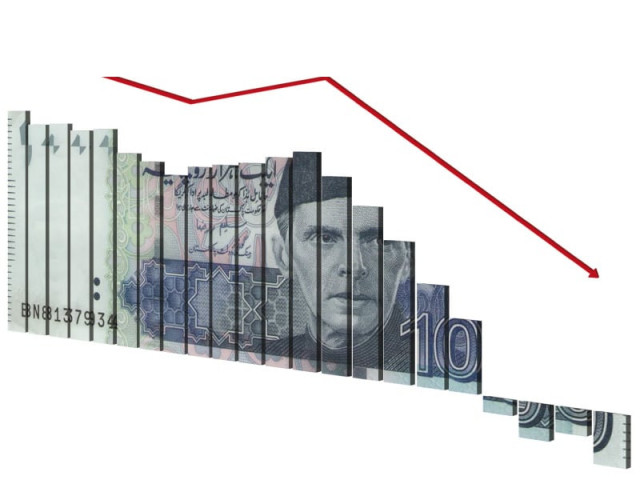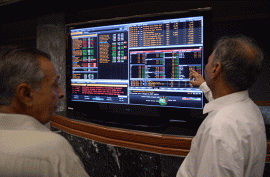
Despite rising government borrowing and high interest rates, profits at the State Bank of Pakistan have been declining for the last two years, largely due to a decline in non-interest income, declining by 10% over two years.
In an audit report of the central bank’s financial statements up to fiscal year 2011, auditors observed that the SBP’s net income declined, even though interest income kept rising. “Net profits in 2011 declined by 3.1% even though interest income [the biggest source of revenue] went up 16.4%,” observed report issued by the Auditor General of Pakistan’s office.
Despite the drop, the State Bank of Pakistan remains the single most profitable entity in the country – public or private – with a net income totalling Rs181 billion in 2011, down 3.1% from the Rs187 billion it earned in 2010 and 10% from the Rs202 billion it earned in 2009.
The main source of the central bank’s revenues is the monetisation of the national debt: the government asks the SBP to simply print money and then buy up treasury bills issued by the finance ministry to cover the federal government’s fiscal deficit. The government then pays interest on those bills that the State Bank bought simply by printing money, virtually out of thin air, a process that economists agree is highly inflationary.
In other words, higher profitability at the State Bank is a bad thing and lower profitability is a good thing. Higher profitability means that the government is financing too much of its deficit by printing money and causing inflation, which means higher interest rates, and thus higher income for the SBP. Yet in a twisted financial loop, the government also uses the State Bank’s profits to lower its fiscal deficit, by as much as 1% of the total size of the economy every year.
The auditors, however, appear to have drawn attention to the fact that it is not interest income that is declining, but rather non-interest income, on things such as foreign currency dealings, where the State Bank’s income is down almost 84% to just Rs1.9 billion, compared to Rs11.7 billion two years ago. The State Bank’s interest payments on its own debts also rose 38% over that same period to Rs13.3 billion, also contributing to the decline in net income.
“These are not healthy signs for the profitability of the Bank and required corrective measures,” observed the audit department.
In 2011, the SBP’s gross income rose by Rs30.4 billion, or 16.4% to Rs216 billion. However, the bank’s operating income – the profits its gains from such heads as the Banking Services Corporation and other activities – went from a profit of Rs10.5 billion in 2010 to a loss of Rs11.6 billion in 2011.
The report may well become fodder for other government organisations such as the finance ministry to begin criticising the central bank – which has always had a structure independent of the rest of the government – for what are perceived to be higher benefits for its employees. Insiders at the SBP, however, argue that the central bank needs to lure talent away from the lucrative financial services sector that it regulates, and hence needs higher salaries and benefit packages.
The central bank’s leverage ratio – the ratio of company’s debt to its equity – is also worsening. The leverage ratio has deteriorated by 1.6%, according to the audit report. The audit also warned the central bank to make efforts for minimizing its credit risk over non-interest bearing financial instruments.
Published in The Express Tribune, June 26th, 2012.


















COMMENTS
Comments are moderated and generally will be posted if they are on-topic and not abusive.
For more information, please see our Comments FAQ